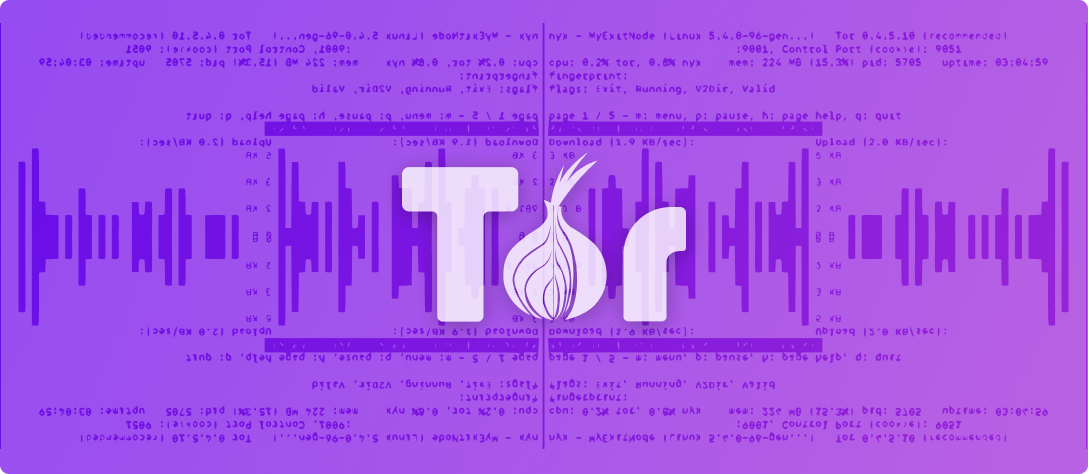Supporting the Tor Project: How to Set Up and Maintain a Tor Exit Relay: A Comprehensive Guide
Comprehensive Guide How to Set Up and Maintain a Tor Exit Relay
The Tor Project is a vital tool for privacy, security, and freedom online. By running a Tor exit relay, you can significantly contribute to the network, providing users worldwide with secure and anonymous access to the internet. However, exit relays are more complex to manage than other relays due to their direct interaction with the internet. This guide will cover everything you need to know about setting up and maintaining a Tor exit relay on a Linux server, along with tips for supporting the Tor Project and securing your server.
What Is a Tor Exit Relay?
A Tor exit relay is the final node in the Tor network through which encrypted traffic exits to reach its destination on the internet. Exit relays are crucial for enabling anonymous communication and bypassing censorship, but they come with additional responsibilities and risks. Unlike middle relays, exit relays expose your IP address to external websites, making careful configuration and maintenance essential.
Why Run a Tor Exit Relay?
- Strengthen the Tor Network: Exit relays are essential for connecting users to the open internet.
- Promote Privacy and Freedom: Help fight censorship and provide a safe browsing environment for users.
- Support Activists and Journalists: Empower individuals in restrictive regimes with secure communication tools.
Requirements for Running a Tor Exit Relay
Hardware and System Requirements
- A dedicated server or VPS with at least 2 CPU cores, 4 GB RAM, and 50 GB disk space.
- A static IP address.
- High bandwidth allocation (minimum 5 Mbps upload and download; higher is better).
- Linux distribution: Ubuntu 22.04, Debian 11, or CentOS Stream.
Legal and Policy Considerations
- Understand the Risks: Exit relays may be associated with the traffic they carry. Familiarize yourself with local laws and policies.
- Abuse Complaints: Exit relay operators often receive complaints about user behavior originating from their IP address. Set up clear abuse policies and implement mitigation measures.
Step-by-Step Guide: Setting Up a Tor Exit Relay
This guide focuses on Ubuntu for simplicity but includes notes for CentOS where applicable.
1. Set Up Your Linux Server
Update the System
sudo apt update && sudo apt upgrade -y # For Ubuntu
sudo yum update -y # For CentOS
Install Essential Tools
sudo apt install curl wget gnupg ufw -y # For Ubuntu
sudo yum install curl wget firewalld -y # For CentOS
2. Install Tor
Add the Tor Repository
For Ubuntu:
- Import the GPG key:
curl https://deb.torproject.org/torproject.org/policy/torbrowser.asc | sudo gpg --import - Add the repository:
echo "deb https://deb.torproject.org/torproject.org $(lsb_release -cs) main" | sudo tee /etc/apt/sources.list.d/tor.list - Update and install Tor:
sudo apt update sudo apt install -y tor deb.torproject.org-keyring
For CentOS:
- Enable the EPEL repository:
sudo yum install epel-release -y - Install Tor using Fedora Copr:
sudo dnf install dnf-plugins-core -y sudo dnf copr enable @torproject/tor -y sudo dnf install tor -y
3. Configure the Tor Exit Relay
Open the Tor configuration file:
sudo nano /etc/tor/torrc
Add or modify the following settings:
Basic relay configuration
RunAsDaemon 1
ORPort 9001
ExitRelay 1 # Enable exit functionality
SocksPort 0
Bandwidth limits
RelayBandwidthRate 5 MB # Adjust based on your bandwidth
RelayBandwidthBurst 10 MB
Exit policy
ExitPolicy accept *:80, accept *:443 # Allow web traffic only
ExitPolicy reject : # Reject all other traffic
Server identity
Nickname YourExitRelayName
ContactInfo [email protected]
Data directory
DataDirectory /var/lib/tor
Save the file and restart Tor:
sudo systemctl restart tor
Verify Tor is running:
sudo systemctl status tor
4. Configure Firewall Rules
For Ubuntu
- Allow incoming traffic on the ORPort (default 9001):
sudo ufw allow 9001 - Enable the firewall:
sudo ufw enable - Verify the firewall status:
sudo ufw status
For CentOS
- Allow the ORPort:
sudo firewall-cmd --permanent --add-port=9001/tcp sudo firewall-cmd --reload - Verify open ports:
sudo firewall-cmd --list-ports
5. Monitor Your Exit Relay
- Install
nyx, a command-line monitoring tool:sudo apt install nyx -y # Ubuntu sudo yum install nyx -y # CentOS - Run
nyxto monitor bandwidth and activity:nyx
Best Practices for Running an Exit Relay
1. Set Clear Abuse Policies
- Use a dedicated email address for handling abuse complaints.
- Publish your relay’s purpose and contact details in the
ContactInfofield of yourtorrc.
2. Secure Your Server
- Disable SSH password logins and enable SSH keys:
ssh-keygen -t rsa -b 4096 - Change the default SSH port from 22 to a custom port.
- Keep the system updated:
sudo apt update && sudo apt upgrade -y # Ubuntu sudo yum update -y # CentOS
3. Log Traffic Responsibly
- Avoid storing logs of Tor traffic to protect user anonymity and reduce liability.
4. Join the Tor Community
- Stay connected with other relay operators and Tor developers via forums and mailing lists.
Hardening Your Tor Exit Relay
- Use a Dedicated Server: Avoid sharing the server with other applications or services.
- Enable Tor’s Sandbox Mode: Add
Sandbox 1to yourtorrcfile for better process isolation. - Rate Limit Connections: Protect against abuse by limiting the bandwidth available to Tor.
- Monitor Performance: Regularly check the health of your relay using Tor Metrics.
Common Challenges and How to Address Them
1. Abuse Complaints
- Respond promptly to complaints with a standard message explaining that you run a Tor exit relay and do not log traffic.
2. Bandwidth Throttling by ISPs
- Consider using a privacy-respecting hosting provider that supports Tor relays.
3. Legal Issues
- Consult a lawyer if you receive legal notices about your relay’s activity.
Conclusion
Running a Tor exit relay is a powerful way to support online privacy and freedom. With careful configuration, regular maintenance, and adherence to best practices, you can safely and effectively contribute to the Tor network. Follow this guide to set up and maintain your exit relay, and remember that every relay strengthens the Tor Project’s mission to create a more private and censorship-free internet.











0 thoughts on “Supporting the Tor Project: How to Set Up and Maintain a Tor Exit Relay: A Comprehensive Guide”